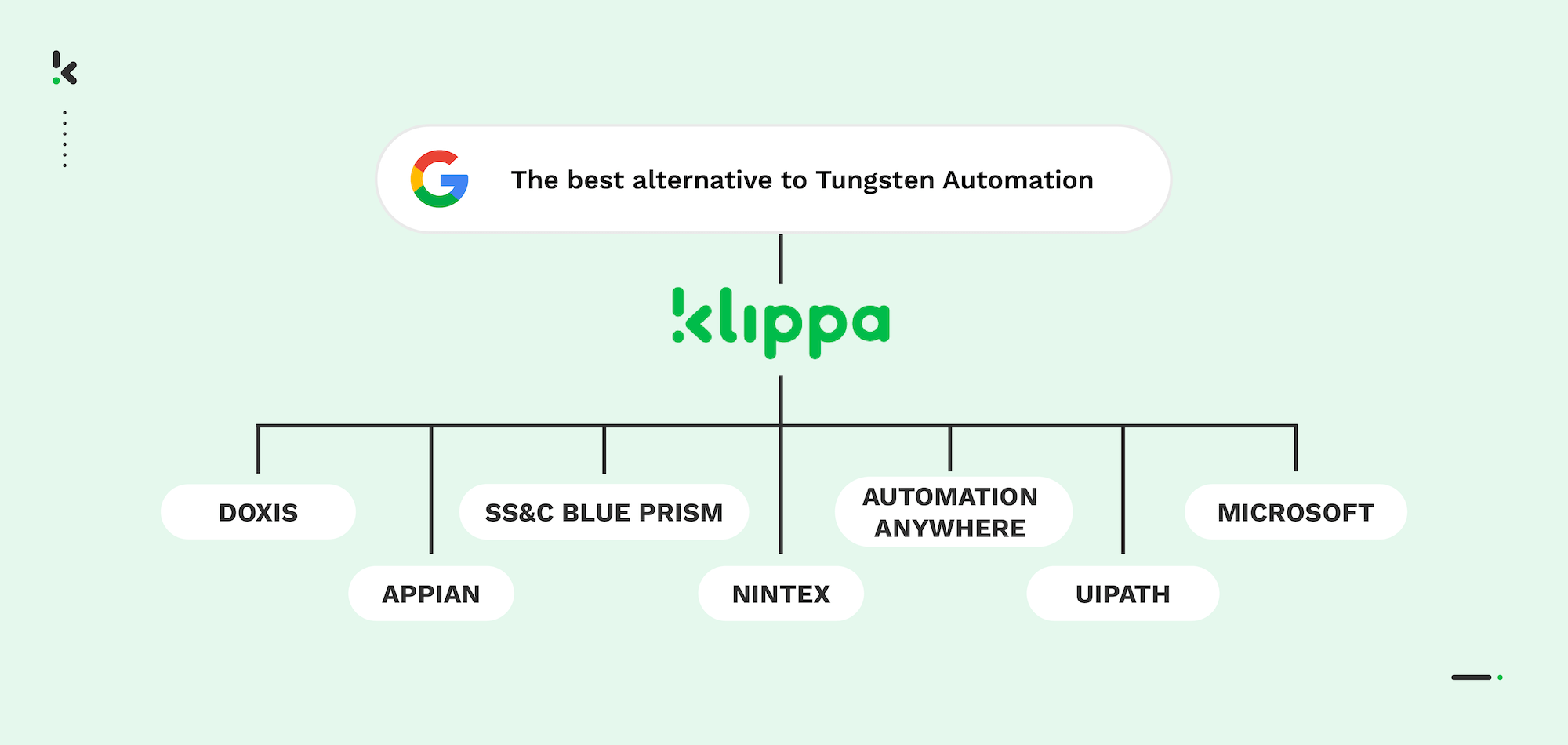

Tungsten Automation (previously known as Kofax) has long been a big name in Robotic Process Automation (RPA) and Intelligent Document Processing (IDP). For years, it’s helped businesses worldwide streamline workflows and process information efficiently.
But here’s the thing: automation isn’t one-size-fits-all. Different teams need different tools. Some want a platform that handles complex business processes from start to finish. Others just need something that’s lightning-fast at processing documents. And some are looking for low-code solutions that their teams can pick up in an afternoon.
The good news? There’s no shortage of great options in 2026. From global automation leaders to niche specialists, we’ve rounded up eight standout alternatives to Tungsten Automation, each with its own strengths, so you can find the one that fits like a glove.
Let’s take a closer look.
Key Takeaways
- There’s no single “best” automation platform. The ideal choice depends on your workflows, team, and goals.
- Klippa DocHorizon is a top pick for businesses that work heavily with documents, offering advanced OCR, data extraction, and fraud detection in one easy-to-implement platform.
- Doxis combines intelligent information management with process automation for enterprise-grade performance.
- For broader business process automation (RPA), leading names include UiPath, Automation Anywhere, SS&C Blue Prism, Microsoft Power Automate, and Nintex.
- Low-code and integration-focused tools like Appian make it easier to connect automation with other systems.
- When choosing an alternative, look at ease of use, scalability, AI capabilities, and how well the solution matches your specific use case.
Top Tungsten Automation (Kofax) Alternatives in 2026
Whether you’re exploring broader Robotic Process Automation (RPA) platforms or looking for a specialized Intelligent Document Processing (IDP) solution, there’s no shortage of automation tools that can help streamline your workflows. Each alternative on this list brings something unique – from advanced AI capabilities to low-code design and deep integration options.
Below, we’ve rounded up eight standout platforms worth considering, starting with one of the most advanced document processing solutions available today.
1. Klippa DocHorizon
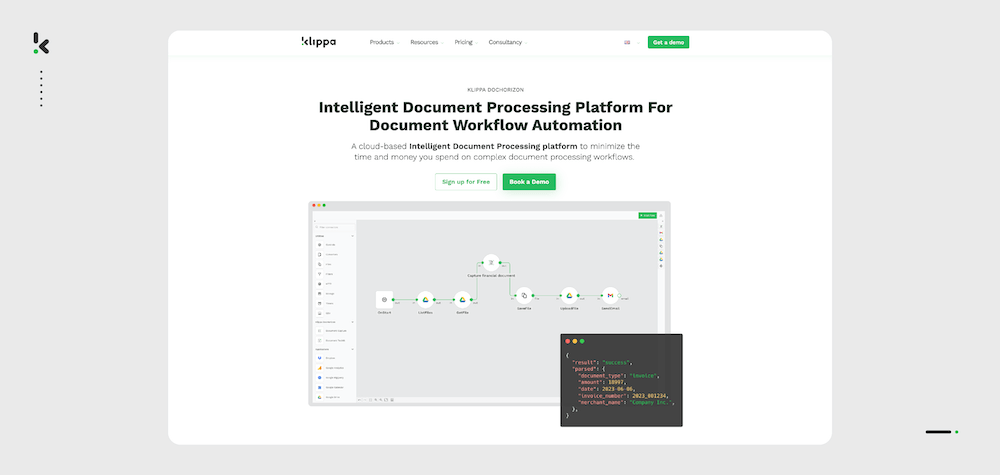

Klippa DocHorizon is a powerful, AI-driven Intelligent Document Processing (IDP) solution built to turn complex, document-heavy workflows into efficient, automated processes.
Rather than just converting scanned files into editable text, DocHorizon goes several steps further, extracting key data, validating it, checking for fraud, and integrating seamlessly into your existing systems.
It’s designed for accuracy, speed, and compliance, making it a standout choice for organizations that rely on fast, reliable document handling.
Features:
- Real-time OCR and data extraction for invoices, receipts, passports, contracts, and more
- Image pre-processing to maximize OCR precision before extraction
- Automated classification and sorting based on custom rules
- AI-driven anonymization to protect sensitive fields
- Built-in fraud detection for verifying document authenticity
- Cloud or on-premise deployment options
- API & SDK integration with CRM, ERP, and other business systems
- Supports 150+ languages and multiple formats (PDF, JPG, PNG, XLSX, etc.)
Pros:
- Accuracy rates up to 95% in real-world scenarios
- Low-code workflow builder for quick setup and adjustments
- Human-in-the-loop verification for critical data checks
- GDPR-compliant and ISO-certified (27001 & 9001)
Considerations:
- May require initial setup planning for non-technical users
- Specializes in document workflows rather than general RPA tasks
Best For: Organizations that handle high volumes of structured or semi-structured documents and need a secure, AI-powered automation platform.
2. Doxis
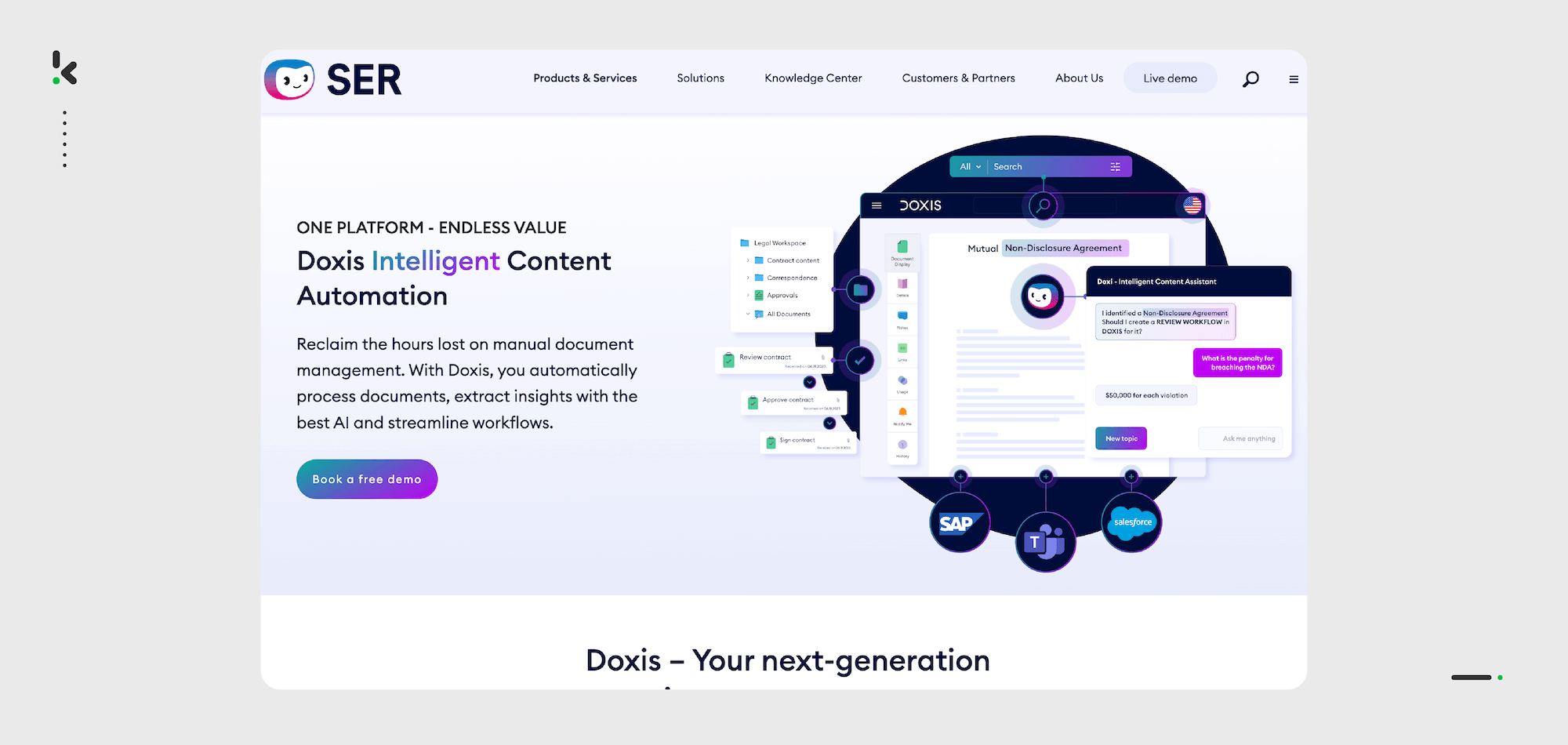

Doxis, developed by SER Group, is a leading platform for Intelligent Content Automation that combines document processing, content services, and workflow automation in one unified solution.
Recognized as a leader in the Gartner® Magic Quadrant™ for Document Management, Doxis is designed for large organizations that need to manage massive volumes of documents, ensure compliance, and connect information across teams and systems.
It’s particularly strong in industries with heavy regulatory requirements, such as finance, healthcare, and government.
Features:
- Centralized information management hub for structured and unstructured data
- Intelligent document processing with OCR, data extraction, and classification
- Built-in records management and compliance tools
- Advanced search and retrieval with metadata and AI indexing
- Case management and workflow automation for complex processes
- Scalable architecture and flexible deployment (cloud, on-premise, hybrid)
- Integration with popular enterprise systems (ERP, CRM, HR platforms)
Pros:
- Deep enterprise-grade compliance features
- Flexible architecture to match IT strategies
- Strong reputation and industry recognition
- Capable of handling both process automation and content services in one
Considerations:
- Designed for enterprise-scale usage — may be more than smaller teams need
- Implementation requires thorough planning and governance
Best For: Large organizations with complex compliance needs and multiple departments that require secure, centralized access to information and documents.
3. UiPath
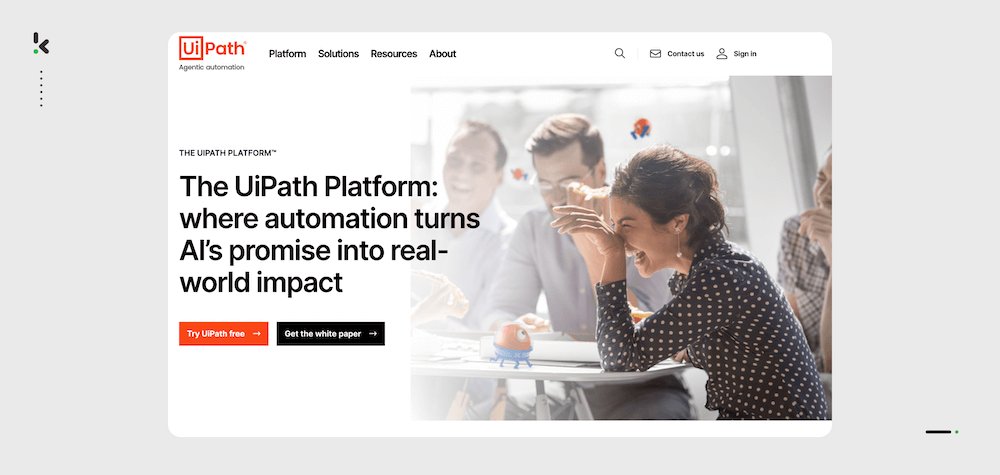

UiPath is one of the most well-known platforms in the Robotic Process Automation (RPA) space. It helps organizations automate repetitive tasks, integrate workflows, and make use of AI-driven features to improve efficiency.
UiPath’s interface and large library of automation templates make it accessible to technical teams, while still offering depth for complex projects.
Features:
- Workflow automation across applications and systems
- AI-enhanced data interpretation and process execution
- Pre-built automation templates in the UiPath Marketplace
- Integration with ERP, CRM, and cloud services
- Tools for managing attended and unattended robots
- Process mining and analytics capabilities
Pros:
- Widely recognized in the RPA industry
- Offers resources and training through UiPath Academy
- Large selection of pre-built automation components
Considerations:
- Primarily designed for process automation — not specialized in document workflows
- Advanced capabilities may require dedicated technical resources
Best For: Organizations seeking a market-tested, general-purpose RPA platform with a wide range of integrations and automation templates.
4. Automation Anywhere
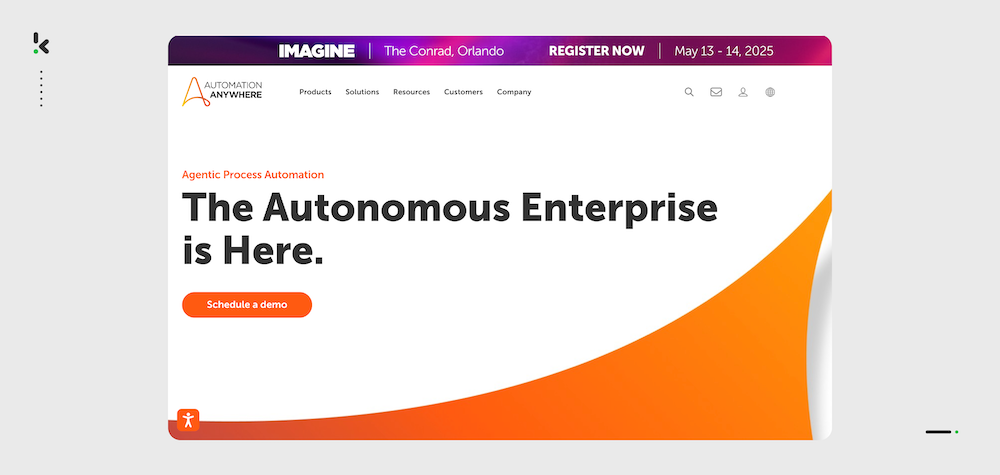

Automation Anywhere offers a platform for Robotic Process Automation (RPA) with a focus on cloud-native deployment and accessibility. It’s designed to help businesses automate tasks, coordinate workflows, and integrate AI technology into operations.
Its tools cater to organizations that want to scale automation without heavy on-premise infrastructure.
Features:
- Attended and unattended automation capabilities
- AI and machine learning integration for data handling and decision-making
- Cloud-based deployment for easier scalability and access
- Process analytics and performance reporting tools
- Pre-built bots and templates available through Bot Store
- Integration with enterprise software and web applications
Pros:
- Designed to work without extensive on-premise setup
- Provides resources for building and managing bots quickly
- Supports automation across multiple industries
Considerations:
- Geared mainly towards process automation rather than dedicated IDP tasks
- Best use often requires tailoring to specific workflows
Best For: Organizations looking for a cloud-first RPA solution that can be deployed and scaled with minimal hardware investment.
5. SS&C Blue Prism
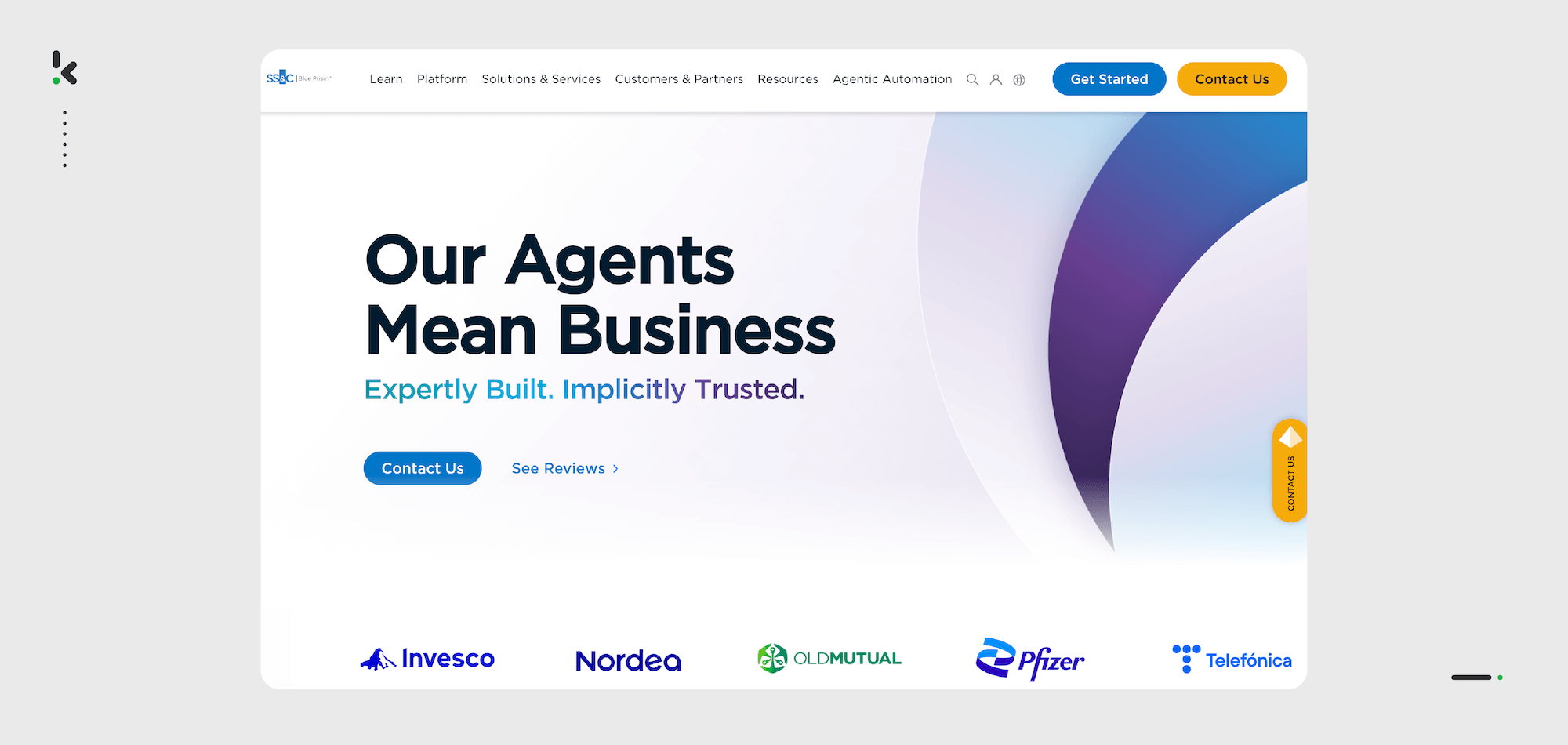

SS&C Blue Prism is an established name in Robotic Process Automation (RPA), known for its visual approach to designing and managing automated workflows. It provides tools that let both technical and non-technical users create, monitor, and adapt automation processes without extensive coding.
Features:
- Drag-and-drop process design interface
- Attended and unattended automation capabilities
- Integration with AI services for cognitive automation
- Centralized management of digital workers
- Process analytics and optimization tools
- Compatibility with a range of enterprise systems
Pros:
- Visual workflow design aids non-technical team members
- Well-recognized in enterprise automation
- Scalable deployment models for different organizational needs
Considerations:
- Primarily a general-purpose RPA platform — not specialized in document processing
- Deployment often benefits from structured governance
Best For: Organizations that value a visual design interface for automation and need a scalable, enterprise-ready RPA solution.
6. Microsoft Power Automate
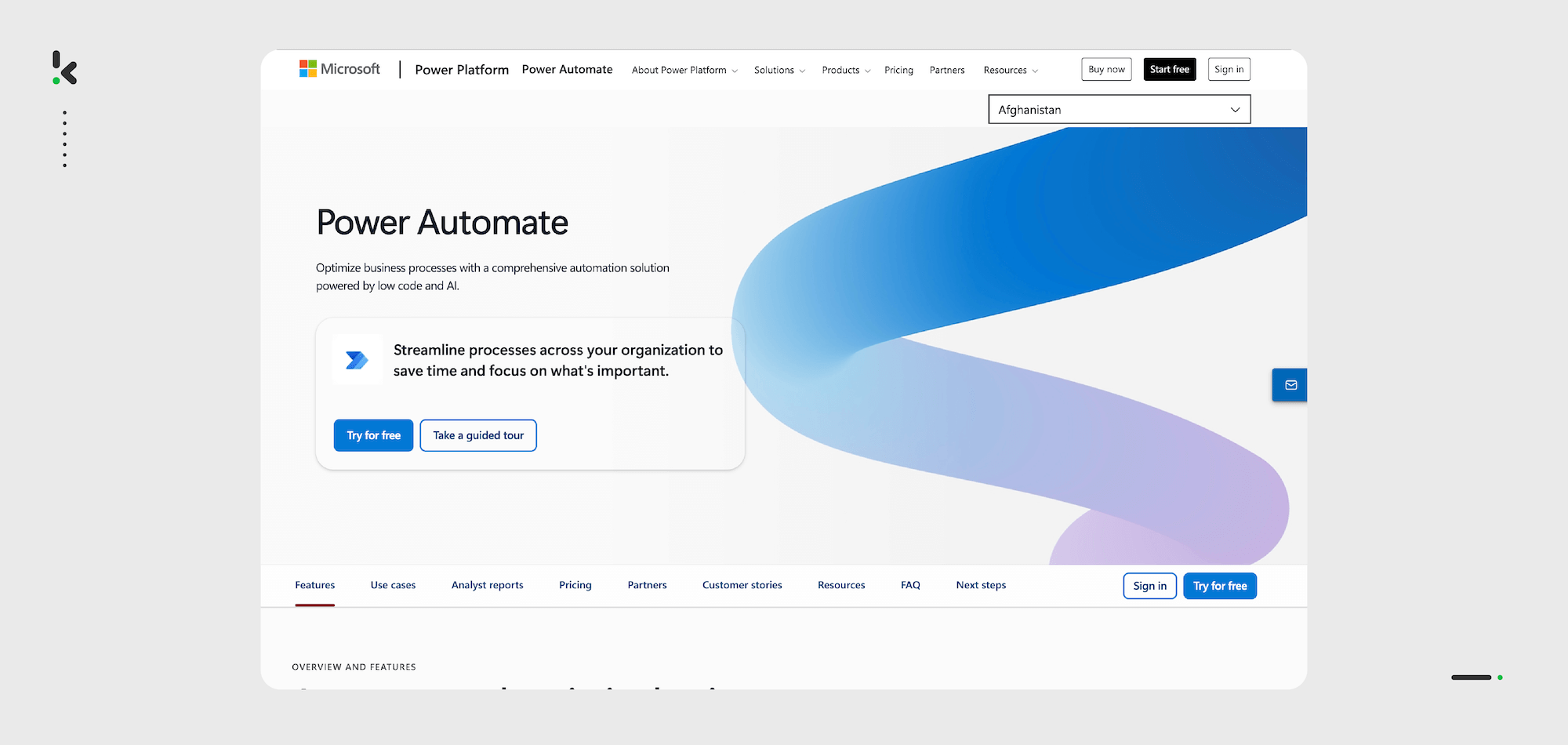

Microsoft Power Automate is a cloud-based tool for creating automated workflows between applications and services. It’s part of the Microsoft ecosystem, making it a natural choice for teams already using Microsoft 365, Dynamics, Azure, or other related products.
The platform provides a wide range of connectors for integrating both Microsoft and third-party systems.
Features:
- Workflow automation across Microsoft 365 and external services
- Hundreds of pre-built connectors and templates
- Trigger-based automation for tasks and notifications
- Integration with AI Builder for document processing and decision-making
- Accessible low-code interface for building flows
- Mobile app for managing workflows on the go
Pros:
- Deep integration with Microsoft products
- Large library of ready-to-use connectors
- Accessible to both technical and non-technical users
Considerations:
- Best suited for businesses already invested in the Microsoft ecosystem
- Complex workflows may require advanced configuration
Best For: Teams using Microsoft tools that want an accessible, low-code platform to automate workflows and integrate additional services.
7. Nintex
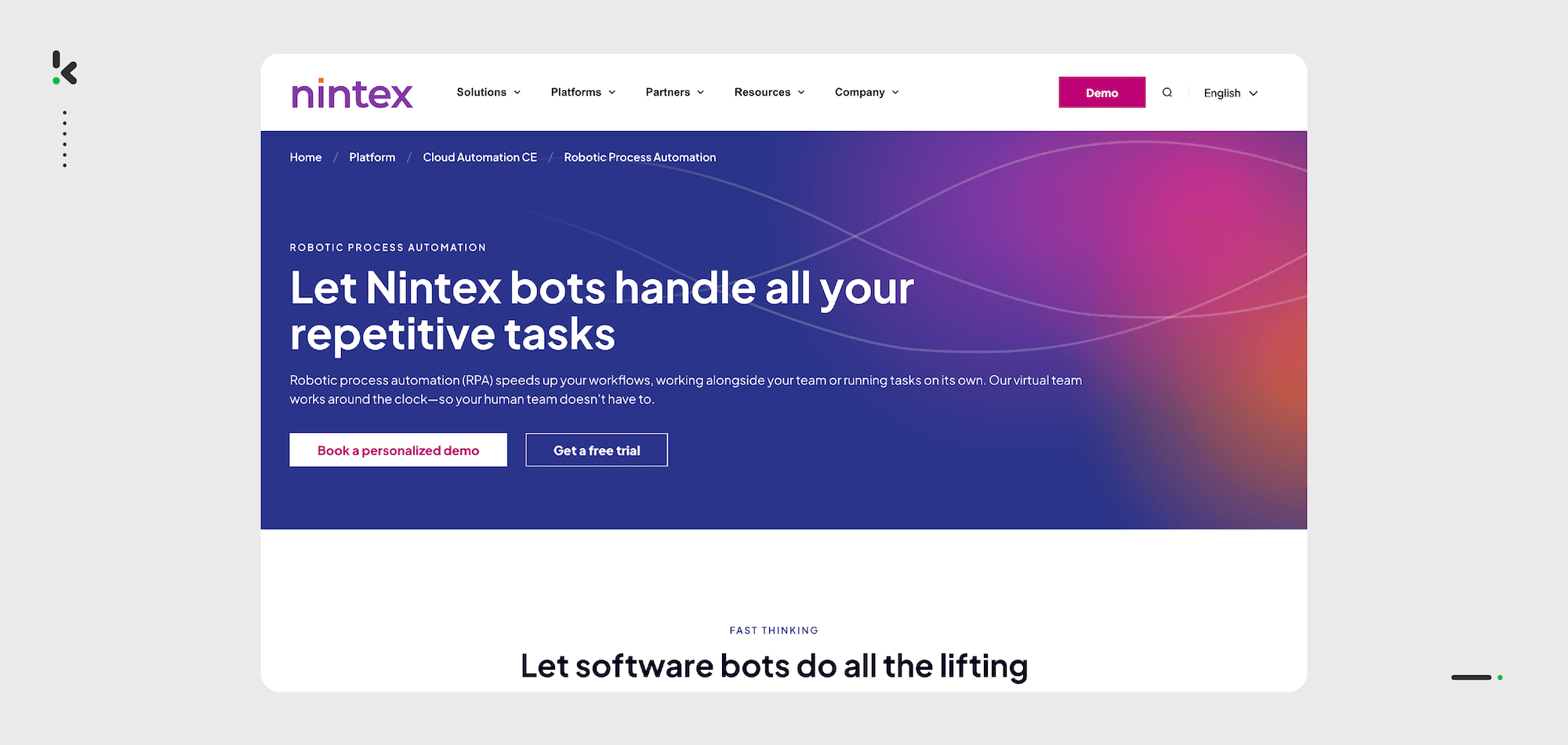

Nintex provides a low-code platform for automating processes, managing workflows, and creating digital forms. It’s designed to help organizations streamline operations without heavy development requirements, making it accessible for teams that want to quickly build and deploy process solutions.
Features:
- Workflow automation with visual design tools
- Digital form creation and document generation
- Process mapping and optimization
- Integration with popular enterprise applications
- Cloud-based deployment options
- Tools for collaboration across departments
Pros:
- Low-code design supports fast implementation
- Broad use cases across industries
- Tools for mapping and understanding existing processes
Considerations:
- Primarily focused on workflow automation — not a dedicated RPA or IDP solution
- Advanced features may require licensing upgrades
Best For: Organizations seeking a low-code platform to automate workflows, manage forms, and optimize processes without extensive programming.
8. Appian
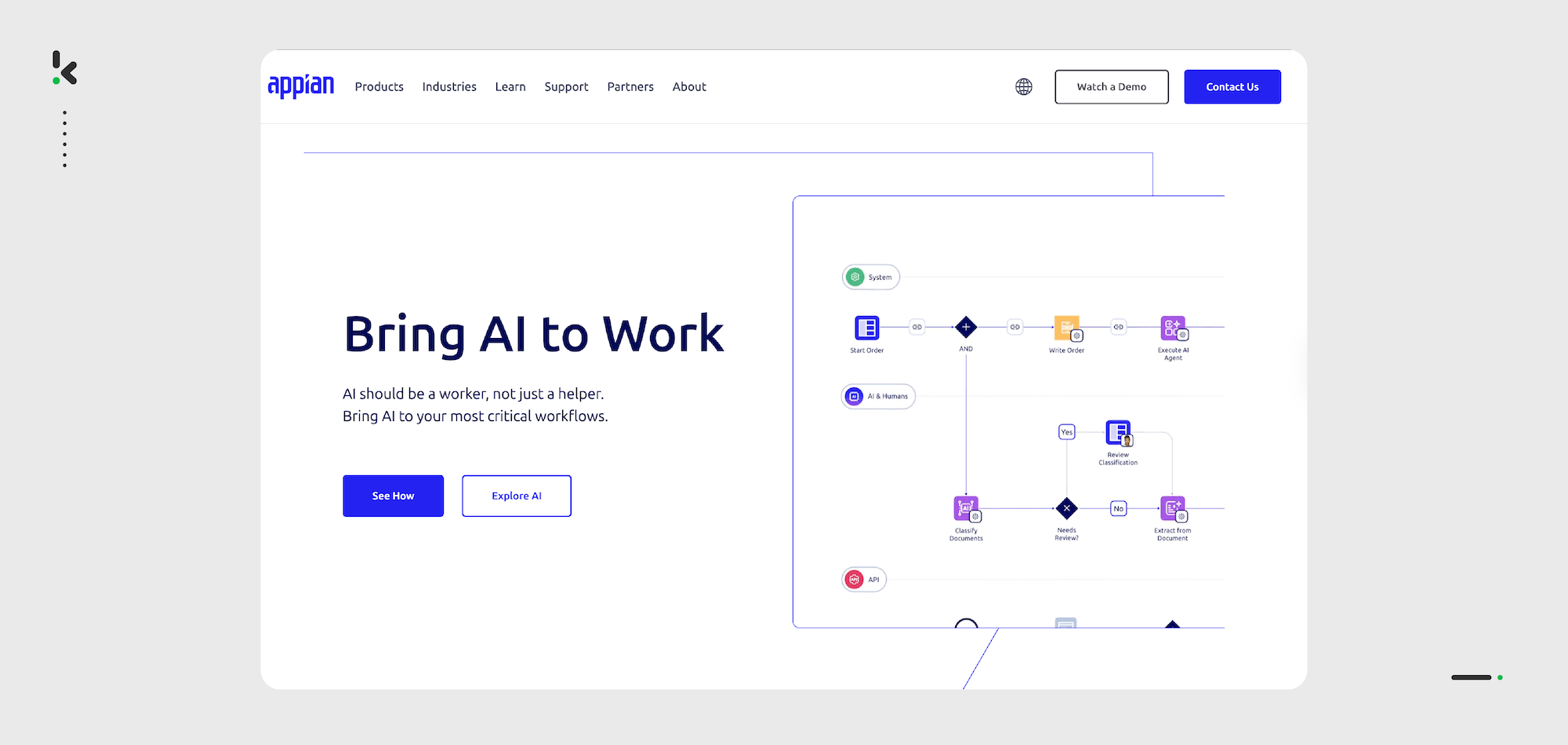

Appian offers a platform that combines low-code development, business process management (BPM), and automation tools in a single environment. It’s designed to help organizations build applications quickly, automate workflows, and integrate with existing systems, all while maintaining enterprise-grade governance.
Features:
- Low-code application development environment
- Workflow automation and business process management
- Integration with databases, cloud services, and enterprise systems
- Case management capabilities for tracking complex processes
- AI and RPA integration options
- Cloud, on-premise, and hybrid deployment models
Pros:
- Combines BPM, low-code apps, and automation in one platform
- Flexible deployment for different IT environments
- Visual tools support faster development cycles
Considerations:
- Best suited for organizations with defined processes to digitize
- Implementation benefits from process mapping and planning
Best For: Organizations that want a unified platform for building apps, managing workflows, and automating processes with business governance.
Factors to Consider When Choosing Your Automation Platform
The best alternative to Tungsten Automation will depend on your organization’s unique needs. Before making a choice, it helps to look beyond feature lists and think about how each platform fits into your overall workflow and growth plans.
1. Ease of Use
Consider how quickly your team can learn and start using the platform. Low-code and visual design tools can help non-technical users get involved faster.
2. Scalability
If you plan to expand automation across the organization, make sure the solution can handle greater volumes and complexity without major reconfiguration or performance issues.
3. AI & Automation Capabilities
Artificial Intelligence and agentic automation can help manage more complex tasks, from interpreting documents to predicting workflow bottlenecks. Decide how important these capabilities are for your use case.
4. Integration with Existing Systems
Check whether the platform connects smoothly with your CRM, ERP, databases, and cloud services. Good integrations reduce the need for manual data handling and speed up deployment.
5. Security & Compliance
For industries with strict regulations, built-in compliance features and secure architectures are critical. Consider certifications, encryption standards, and data handling policies.
6. Industry Fit
Some tools are designed for broad use, while others excel in specific fields like finance, healthcare, or logistics. A closer industry fit often means faster implementation and better ROI.
Finding the right automation platform means choosing one that fits your workflows and goals. Each of these eight solutions has unique strengths, but for document-heavy processes with strict compliance needs, one stands out: Klippa DocHorizon.
The Best Alternative to Tungsten Automation: Klippa DocHorizon
Klippa DocHorizon combines advanced OCR, data verification, anonymization, and fraud detection to deliver a complete solution for businesses that need intelligent document processing alongside automation.
Part of the SER Group, a recognized Leader in the Gartner® Magic Quadrant™ for Document Management, Klippa provides cutting-edge document processing capabilities to teams across multiple industries, making it the top alternative to Tungsten Automation in 2026.
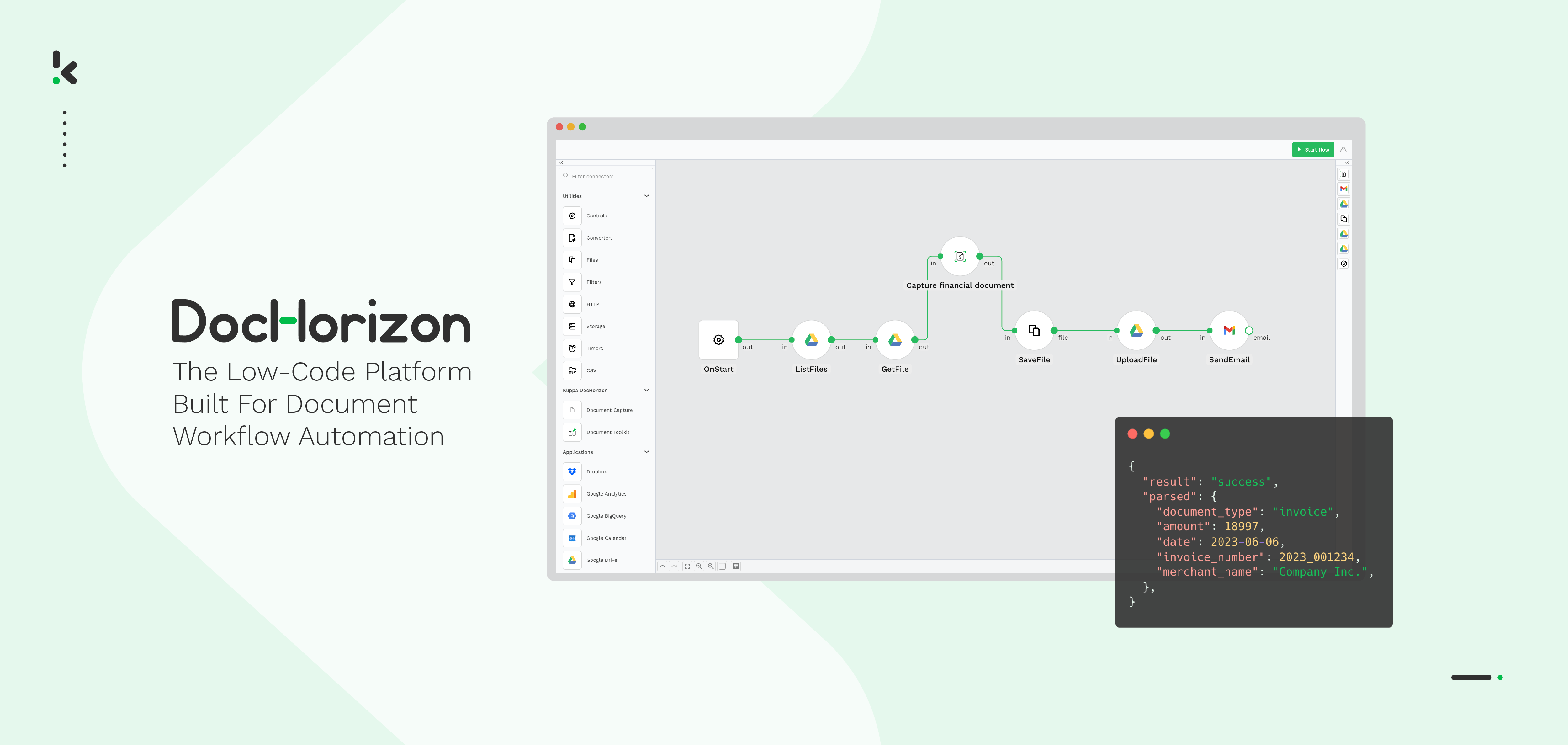

Klippa’s low-code platform makes it easy to automate and optimize every step of your document workflow. With powerful features and an intuitive interface, you can:
- Create automated flows with a simple drag-and-drop user interface
- Define workflow tasks and run them in real time
- Retrieve documents from databases, folders, email, Google Drive, and more
- Shorten processing times with AI-powered data extraction
- Send standardized data to existing applications via seamless conversion
- Certify document authenticity with built-in verification
- Stay compliant with data protection using anonymization features
- Detect document forgery with fraud detection capabilities
- Organize and store files efficiently with automated classification and sorting
If your organization needs an alternative to Tungsten Automation with specialized document processing, AI-powered workflows, and proven automation technology, Klippa DocHorizon is ready to deliver. Contact our team or book a free demo today!
FAQ
Tungsten Automation, formerly Kofax, provides Robotic Process Automation (RPA) and Intelligent Document Processing (IDP) tools for automating business workflows and handling documents at scale.
Different businesses have different requirements: some may want specialized document solutions, others prefer simpler deployment, or broader automation capabilities. Exploring alternatives ensures the best fit for your needs.
IDP platforms specialize in extracting and validating data from documents, while RPA tools automate broader workflows and system integrations.
Low-code tools allow faster implementation, empower non-technical teams, and reduce development overhead.
The best alternatives include a mix of Intelligent Document Processing (IDP) platforms and Robotic Process Automation (RPA) tools such as UiPath or Automation Anywhere. Klippa DocHorizon stands out for organizations with high volumes of structured or semi-structured documents, offering advanced OCR, fraud detection, anonymization, and seamless ERP/CRM integration.
It combines advanced OCR with pre-processing, multilingual support (150+ languages), fraud detection, and built-in anonymization – features typically spread across multiple tools in competing platforms.
Absolutely. It provides API and SDK integrations for common business systems like SAP, Microsoft Dynamics, Salesforce, and custom applications.
Yes. Users can add verification checkpoints into automated workflows, ensuring human review for critical or sensitive data before export.
Yes. The platform includes AI-driven fraud checks for document authenticity, ideal for industries like finance, insurance, and government.
In real-world business scenarios, accuracy rates reach up to 95%, especially when using built-in image pre-processing to optimize results before data extraction.